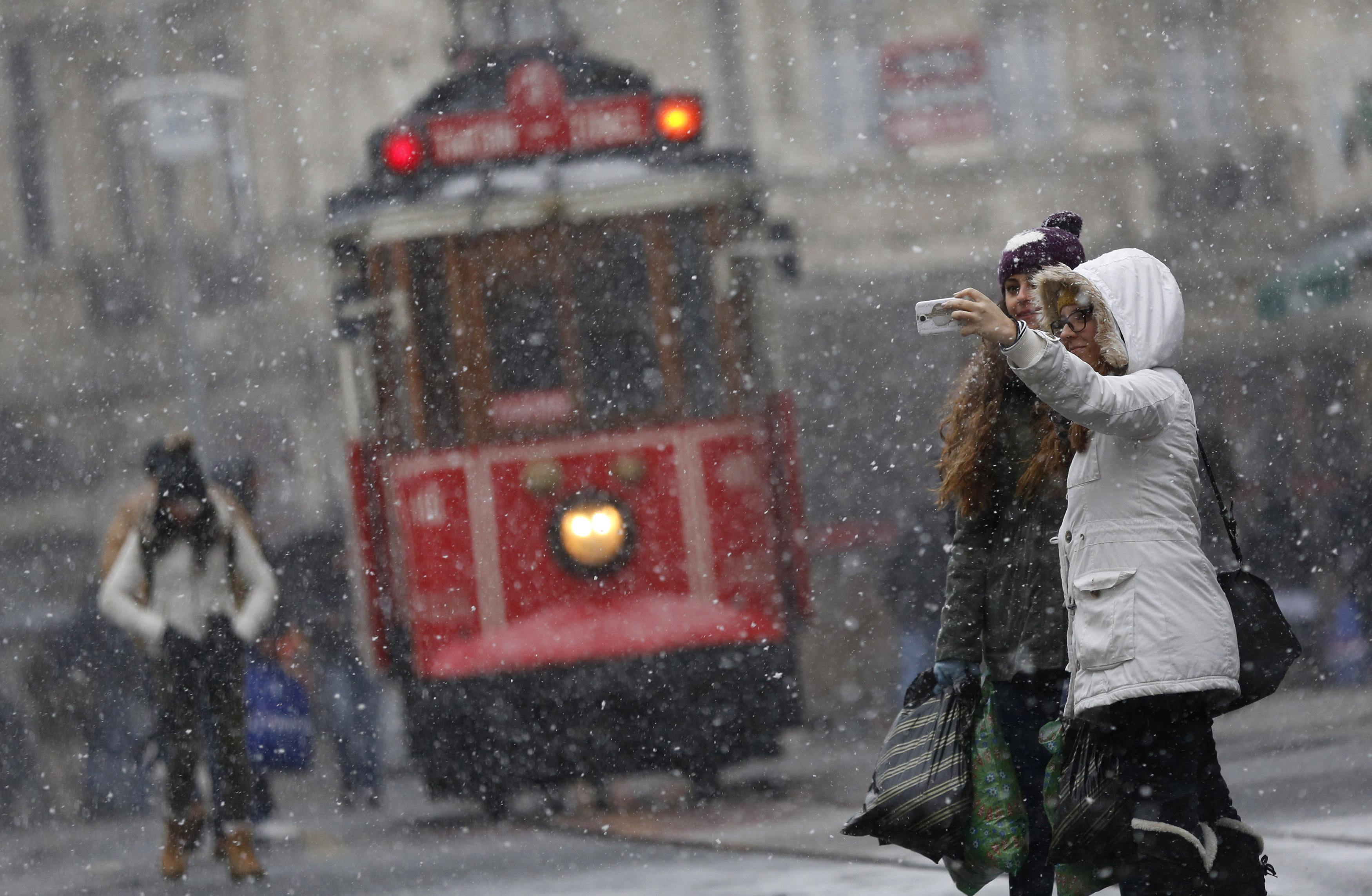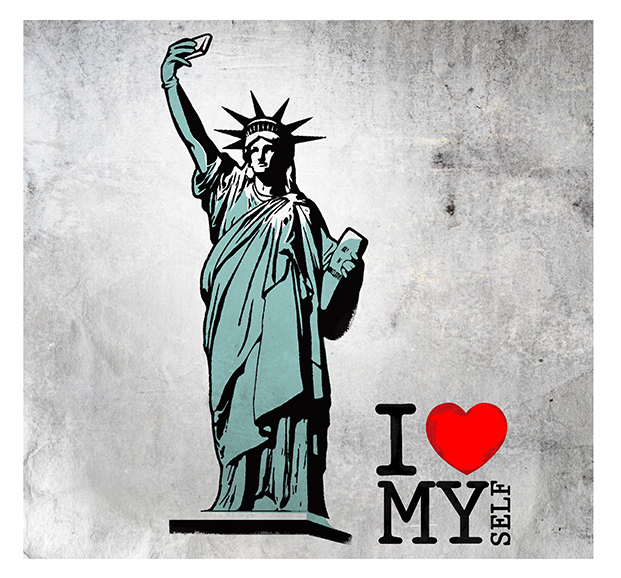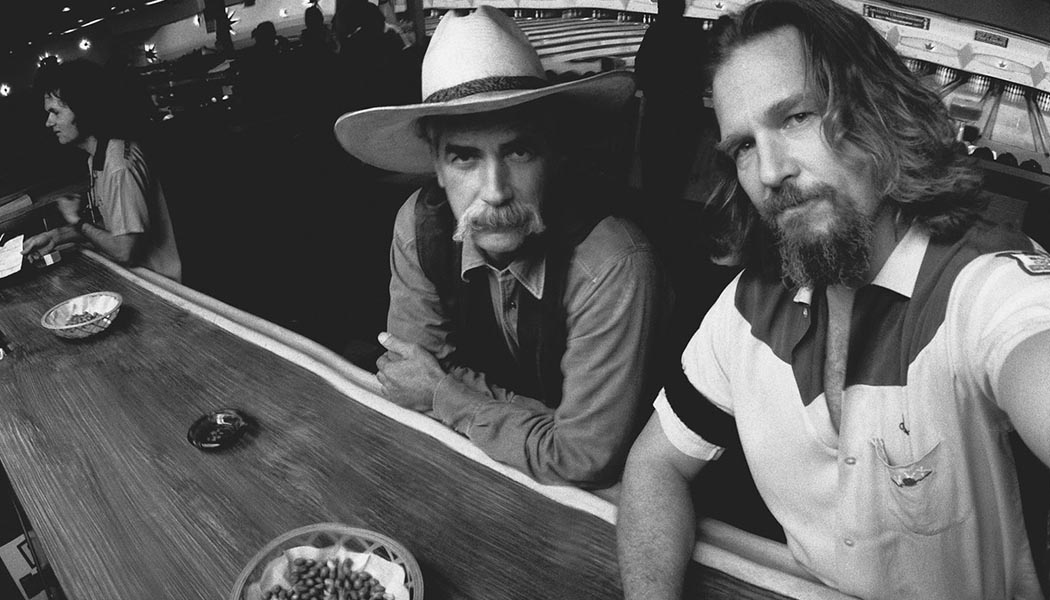Andrew E. Hall addresses the Me generation.
“I wonder if the course of narcissism through the ages would have been any different had Narcissus first peered into a cesspool. He probably did.” – Frank O’Hara (author).
NARCISSISM – the Ancient Grecian myth actually involves a lily pond which captured the image of a young Narcissus who became so enamored of his reflection – and of his imagined beauty – that he died of thirst … dopey bugger.
Earlier this year we heard about an experiment conducted by the Facebook organisation on 700-thousand-plus unwitting account holders.

The company divided the sample group in half and manipulated the news feeds of each group in different ways and monitored the responses. Half of the sample had its feeds manipulated in a negative way (i.e. it was basically bombarded with “bad news”), the other half received positive feeds.
Not surprisingly the posts of the sample that was manipulated in a negative fashion became increasingly negative, and the reverse happened in the other sample.
No permission was sought by Facebook, and apparently the company (that exists to make profits for shareholders despite Mark Zuckerberg’s assertion that it’s all about communication and community) took no account of what consequences might arise should vulnerable people in the negative sample have an adverse reaction to being manipulated in such a fashion . . .

I began my relationship with the (orthodox) media at the broadcast desk in a radio station. Since then I have always loved the medium for all sorts of reasons, and I have a habit in the mornings of listening to news bulletins from the national broadcasters of Australia, the UK and USA. I like to think I’m reasonably well informed about what is happening in the world around me.
But my morning routine has met staunch resistance from a number of women “friends”.
“I hate the news,” says one of them, “why do you listen to that stuff?”
… before sitting down to a couple of hours on Facebook while I make breakfast (which one can do whilst listening to the radio).
For one very simple reason: I would rather receive my information from those who are trained in gathering it, filtering it for accuracy or lack thereof and relevance, and presenting it in a considered and balanced manner. Not from narcissistic twits in the Twitterverse who can speak at length on any given topic because they are happily unencumbered by knowledge.

I’m not suggesting for a minute that social media causes narcissism but they are an excellent facilitator of what I would call a “culture of narcissism” that spans cultures. The increasing ubiquity of “I” promoted by “selfies” and all the other socmed jargon that is so attractive to low-level and extreme narcissists alike is infiltrating every day “real” life in quite an alarming way across the globe’s societal and cultural landscapes. “Narcissistic creep” might be a pithy way of putting it.
And a consequence of this is a skewing of the concept of what “friend” and “love” really is . . . and, indeed, the concept of “community”.

As author Jonathan Franzen observes: “Since our technology is really just an extension of ourselves, we don’t have to have contempt for its manipulability in the way we might with actual people. It’s all one big endless loop. We like the mirror and the mirror likes us. To friend a person is merely to include the person in our private hall of flattering mirrors.”
My interest in writing on the topic of narcissism was piqued after reading a new book by Melbourne, Australia-based essayist and author, Anne Manne, titled, The Life of I: The New Culture of Narcissism.

In part, also because I’ve had suspicions of my own about the increasing ubiquity of this destructive human condition.
Anne Manne’s work is both notable and fascinating – at times horrifying (an emotion that narcissists at the extreme end of the scale are incapable of unless something has happened to upset the centrality of their own warped world view). It begins with an account of the actions and reactions of Norwegian right-wing fundamentalist, Anders Behring Breivik, who murdered 80 of his country-folk on the first day of the summer holiday season in July 2011.
First he set off a bomb outside government buildings in the capital, Oslo – killing 11 and injuring many more. Then, dressed as a policeman, went on a shooting spree on the island of Utøya, where young labour-movement idealists had gathered for a summer camp – killing 69.

His only reaction when he finally (and easily) surrendered to real Norwegian police on Utøya was to demand a Band-Aid because he had cut one of his fingers during his rampage.
And the only time he showed any emotion (he wept) during his trial was when the court replayed a “manifesto” he had recorded on an Internet site . . . touched by his own righteousness and passion . . . and image (in the very way Narcissus was touched).
The multiplier effect of Breivik’s actions extends to literally thousands of people and the ripple effect continues to the present day.
Anne Manne suggests two other narcissist case studies: disgraced cyclist, Lance Armstrong, who has never expressed remorse for his doping habits (except remorse for actually being caught), but rather has consistently represented himself as a “victim”. A lack of remorse is a signature trait of the narcissist. The Life of I also features author Ayn Rand (Atlas Shrugged et al) who, by dint of her relationship with Alan Greenspan (the former head of the US Federal Treasury) was, according to Manne, indirectly culpable in the calamity that was the Global Financial Meltdown during the late 1990s.
The Life of I is particularly interesting because it reveals the consequential scale of the narcissistic personality. And a story that makes one cringe lest one identify with traits that define these extreme narcissists.
“I don’t care what you think unless it is about me.” – Kurt Cobain.

In the 1980s I spent a lot of time in a city named Fremantle in Western Australia. I later lived there before transmogrifying to Bali. “Freo” was an egalitarian place with a large artistic community – somewhat laissez faire in a “pinko” sort of way. Its western border was the fine white beach sands and azure brilliance of the Indian Ocean. But in the ‘80s we were suddenly awash in a sea of orange.
No, not an assemblage of Dutch football fans that had taken a wrong turn somewhere, but an influx of those who followed the “teachings” of kooky Indian carpet-bagger, Bhagwan Shree Rajneesh (AKA “Osho” and a raft of other names that no one really cares about any more). The “Orange People” . . . who wore orange uniforms in similar fashion to the followers of the Hare Krishna movement but without the altruism that motivates those who advocate “Krishna Consciousness” – like feeding those who cannot afford to feed themselves.

“Baggers” – as some of us came to refer to him – had created a giant narcissistic ego bubble that spread throughout the world. A self-proclaimed “Guru” (as opposed to guru, which in Bahasa Indonesia, merely means “teacher”) he basically proclaimed a philosophy of, “go forth and fuck your brains out” that lured and appealed to a large and insecure Westerner-searching-for-Eastern-philosophy population.
He spouted the predictable mantras that circumnavigate the concept of “love” . . . and reneged on the responsibilities that a person in a position of power should always recognise and not remit. He demonstrated classic (well researched) traits of the narcissist – a complete lack of real empathy (as opposed to the unreal kind acted out in order to bring everything back to the self) and an emotional/mental blank when it comes to consequence.

I shared a house in Fremantle for a short time with one of his lapsed acolytes and listened while he spoke in hushed tones about living in the Osho “community” in Oregon, USA – where Baggers maintained a fleet of Rolls Royces amongst other worldly, materialist, goods and pleasures that his followers bought for him – about people who were “disappeared” from the community when they expressed concerns about the narcissistic megalomania of the man.
He, thankfully, died in 1990 in his home state of Puna – after having his immigration status revoked by the US and being banned from entry to 21 other countries (I’m sure that his remaining disciples could come up with some interesting conspiracy theories) – and it would be all too easy to write him off as just another wanker . . . but that would be far from accurate. He prevailed on others to perform that task for him.
It must be said, however, that, post-mortem, his popularity is, again, increasing . . . life is quirky at times.

When the word, “friend”, was reinterpreted by Facebook founder, Mark Zuckerberg, I was baffled. I don’t use the term at all lightly – in fact it is probably the most precious term in my personal lexicon. My mother is my friend, as is my sister and her family. A friend is someone you don’t have to guard yourself against because there is no propensity for them to exploit the vulnerabilities we all posses. Friendship is founded on love and the bond it creates is a form of liberation in a (post-information-revolution) world that can appear intimidating and alienating.
True friendship is altruistic but also comes with a range of responsibilities as referred to in the previous paragraph. I never put the term “just” in front of “friend” or “friends”.
There are certainly individuals who are incapable of feeling or expressing love and psychologists from Sigmund Freud onwards have identified in otherwise healthy people a dysfunctional or abusive upbringing as a primary cause for this. In some others neurological impediment can block emotional development.
During the trial of Anders Behring Breivik his defence team lobbied to have him psychologically examined and declared insane – he had endured an abusive upbringing and had a psychosexual relationship with his mother. Breivik, himself, did not wish this to happen because he was “proud” of what he had done. The assessment, however, went ahead and a team of psychologists found him to have been perfectly rational and lucid at the time of his murderous rampage. They also determined that he had absolutely zero appreciation of the consequences of his actions.
Even this twisted individual can love, however . . . but only himself.
There has been a dramatic increase in scientific research into love in recent decades especially regarding the notion of “heartbreak” as reported on the Association for Psychological Sciences website:
“Psychologists believe that physical pain has two separate components. There is the sensory component, which gives basic information about the damage, such as its intensity and location. There’s also an affective component, which is a more qualitative interpretation of the injury, such as how distressing it is.

A group of researchers, led by Ethan Kross of the University of Michigan, believed that social pain might have a hidden sensory component that hadn’t (previously) been found. They recruited 40 test participants and subjected them to (an) intense social injury: the sight of an ex-lover who’d broken up with them.
Kross and colleagues brought test participants into a brain-imaging machine and had them complete two multi-part tasks. One was a social task: Participants viewed pictures of the former romantic partner while thinking about the breakup, then viewed pictures of a good friend. The other was a physical task: Participants felt a very hot stimulation on her/his forearm, and also felt another that was just warm . . .
Activity in areas (of the brain) associated with affective pain increased during the more intense tasks (seeing the “ex” and feeling the strong heat) . . . The results suggested that social and physical pain have more in common than merely causing distress – they share sensory brain regions too.
These results give new meaning to the idea that rejection ‘hurts’, the researchers concluded in a 2011 issue of Proceedings of the National Academy of Sciences.”
There is, however, a consensus that the most revealing insights into the emotion have come from the arts, music, literature and poetry. And this is particularly pertinent to romantic love as in A Special World by Sheelagh Lennon:
A special world for you and me
A special bond one cannot see
It wraps us up in its cocoon
And holds us fiercely in its womb
Its fingers spread like fine spun gold
Gently nestling us to the fold
Like silken thread it holds us fast
Bonds like this are meant to last
And though at times a thread may break
A new one forms in its wake
To bind us closer and keep us strong
In a special world, where we belong
There have been hundreds of thousands, if not millions, of books, poems, songs, films, artworks etcetera that focus on romantic love and it would not be far fetched to say that they have played an integral part in shaping our perceptions of what love should be.
This can be problematic because “real” or “pure” love is about reciprocity, not projection.
Love is not all sweetness and light – there is a dark side to the emotion: obsession.
On March 30, 1981, John Hinckley Jr. shot and seriously wounded US president Ronald Reagan because he was “in love” with actor Jodie Foster and thought assassinating the president would impress her and gain her attention.
Obsessive love operates hand in glove with love’s cousin, jealousy – one of the most destructive emotions, which occurs in concert with notions of entitlement and possession.
Then there is something referred to as “unconditional love” and we might, perhaps, gain some insight into the nature of unconditional, as opposed to romantic, love in an unusual place – the aftermath of the tragedy that was the shooting down over the Ukraine of Malaysian Airlines flight MH17.
Among the 298 people whose lives were lost were three young children from Perth, Western Australia – Mo (12), Evie (10) and Otis (8) Maslin, and their grandfather, Nick Norris. The Maslin children’s parents had stayed on in Amsterdam where the family had been holidaying, sending the kids home to school in Australia with grandpa Nick.
In early August a memorial service was held at Perth’s Scotch College where Mo was a student and Nick a former student, as The West Australian newspaper reported on August 4:
“Scotch head of middle school Richard Ledger told the crowd of more than 1,000 packed into the private service their role was to laugh and give parents Anthony “Mas” Maslin and Marite Norris the courage to do what they needed to do for their three beautiful and much-loved children. ‘Today is very much a love story,’ he said.”
In an earlier statement made by Ms. Norris and Mr. Maslin they write:
“Our pain is intense and relentless. We live in a hell beyond hell . . .
No one deserves what we are going through.
Not even the people who shot our whole family out of the sky.
No hate in the world is as strong as the love we have for our children . . .
No hate in the world is as strong as the love we have for Grandad Nick.
No hate in the world is as strong as the love we have for each other.
This is a revelation that gives us some comfort . . .
So far, every moment since we arrived home we’ve been surrounded by family and friends. We desperately pray that this continues, because this expression of love is what is keeping us alive . . .
I am in awe of this courageous couple and their raw and precious poetry. Unquestionably it beats the me in all of us.
































